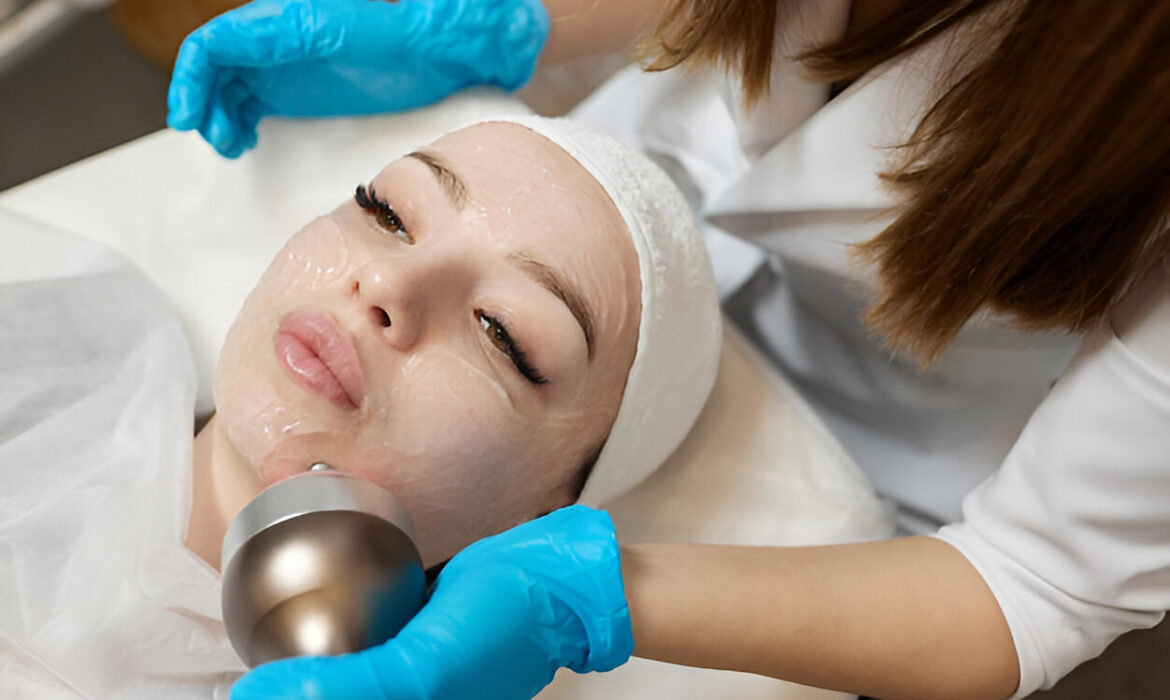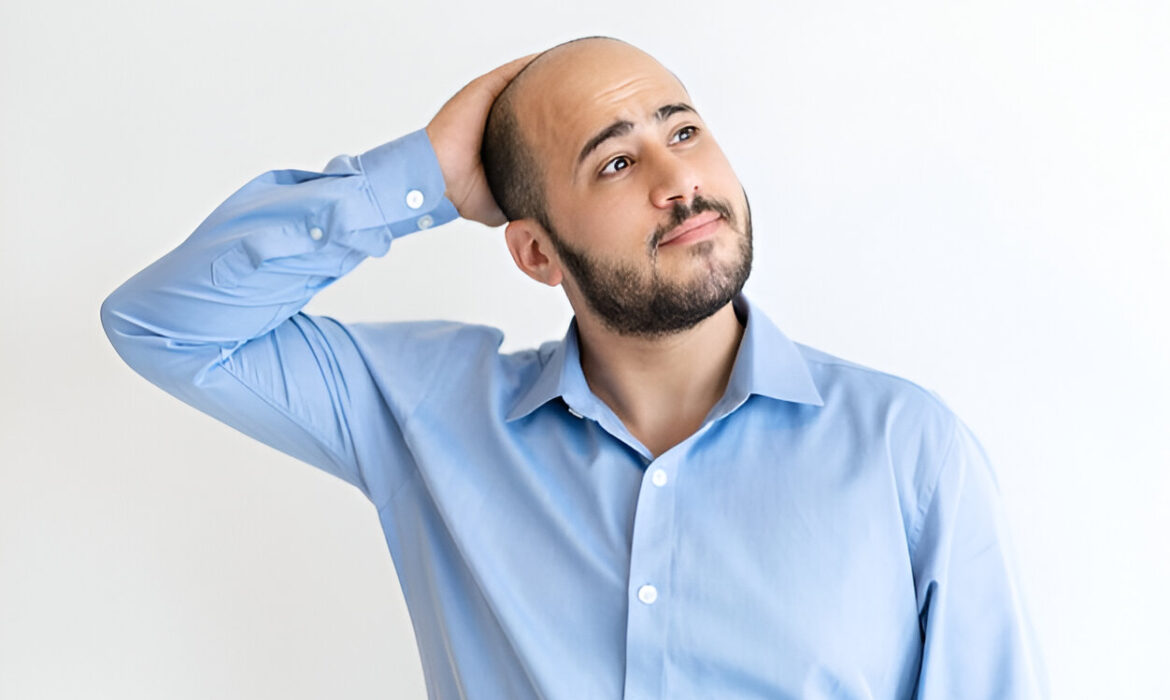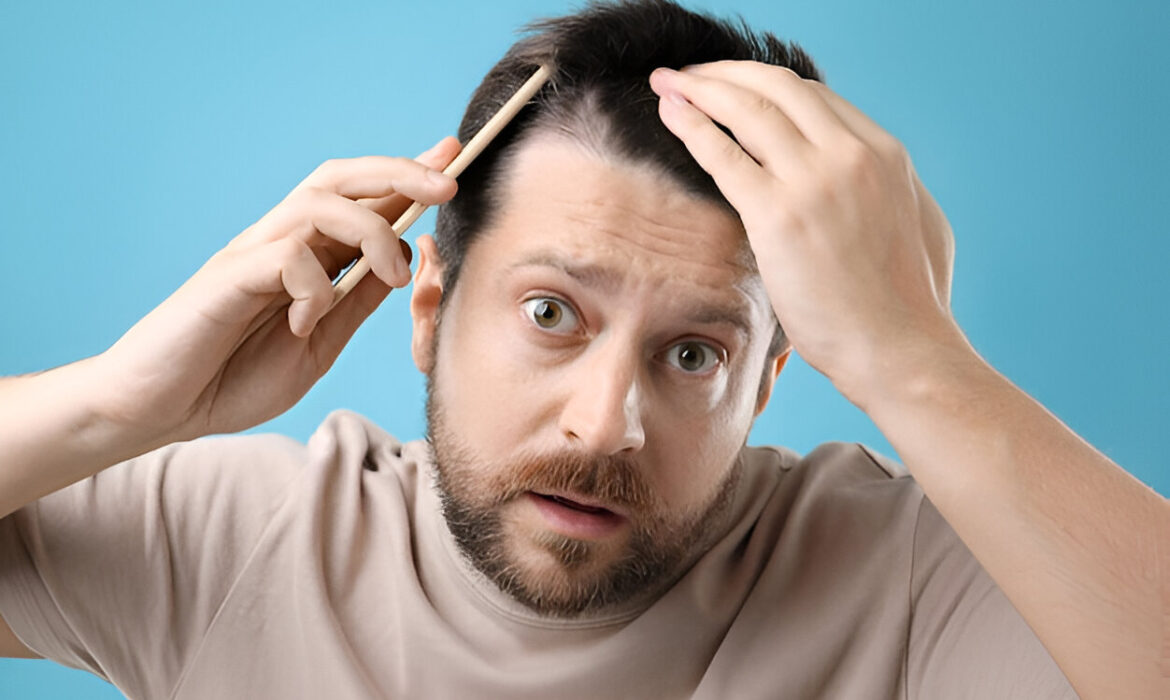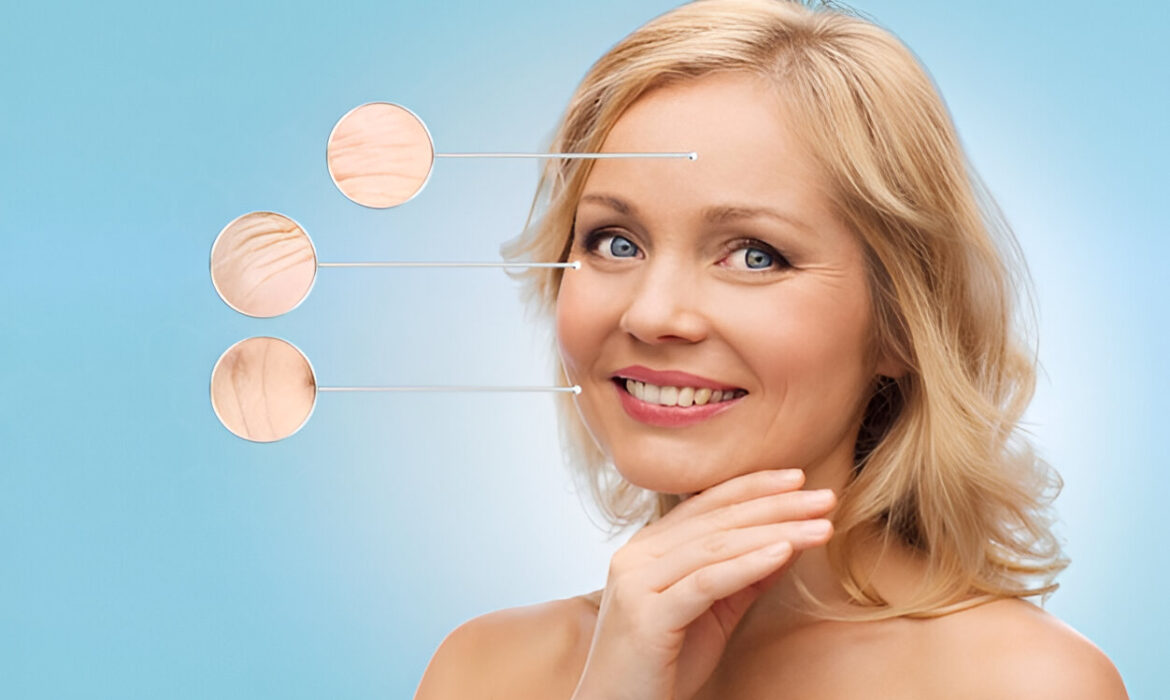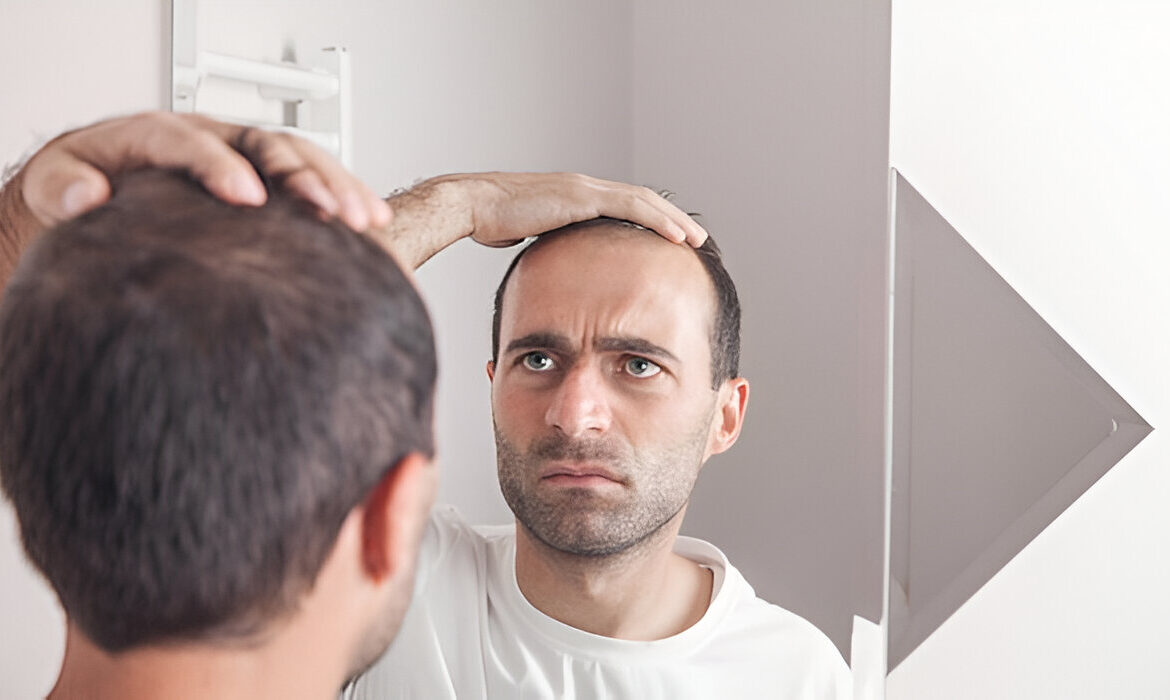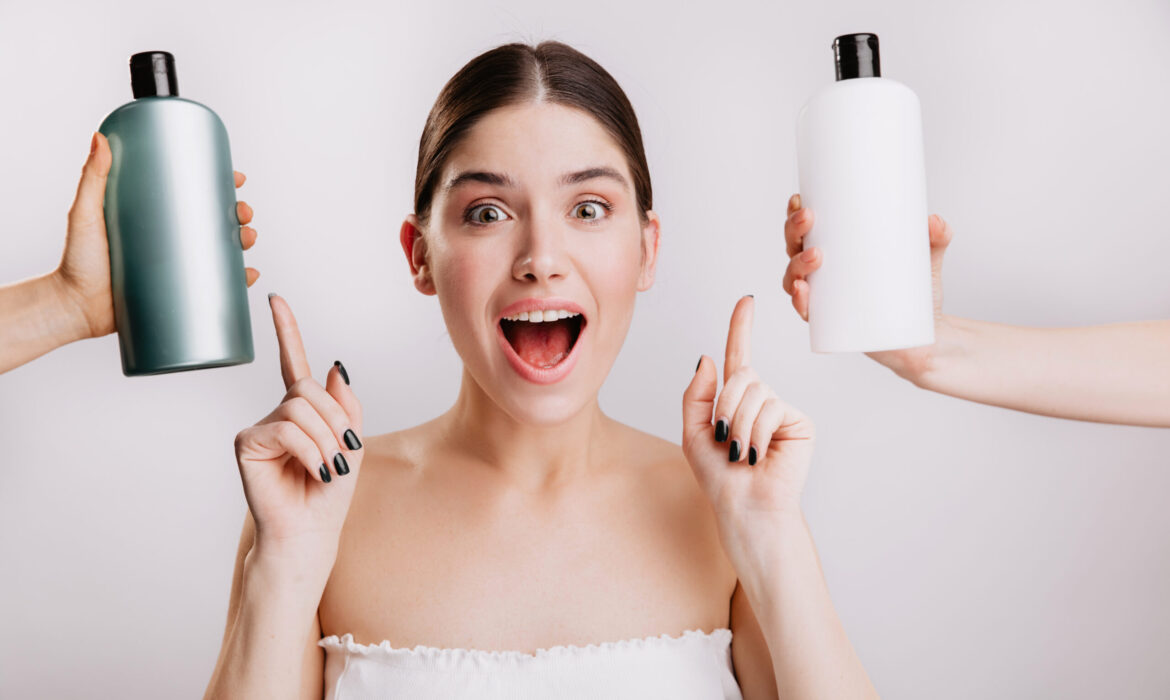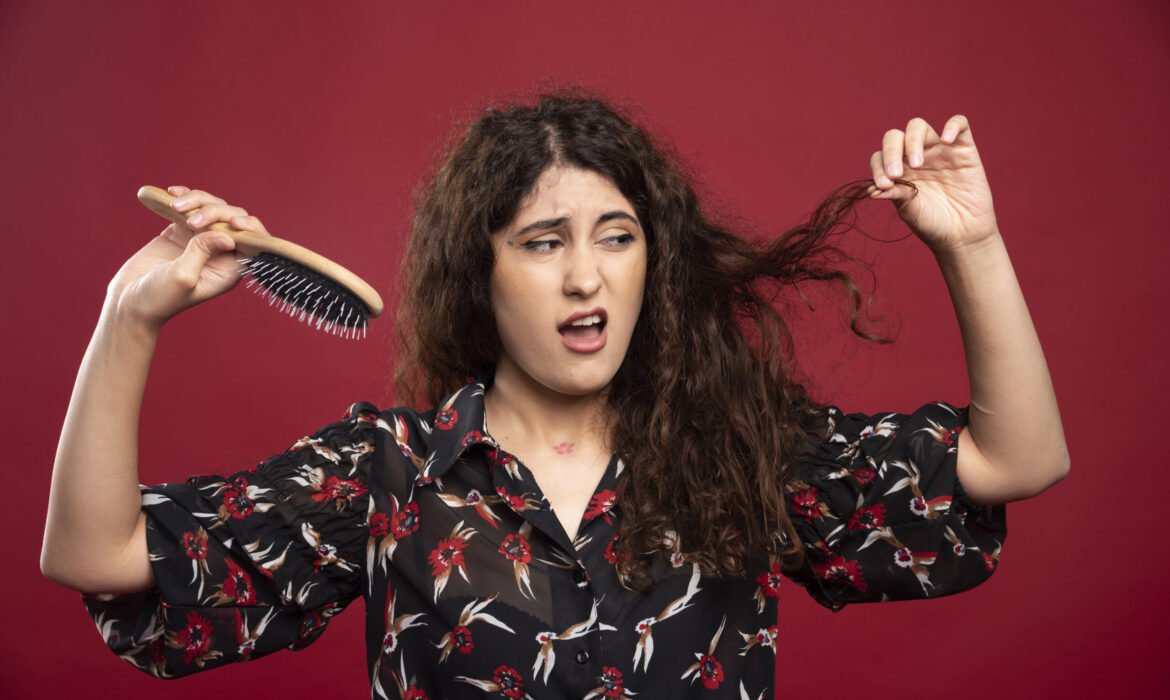Explore Chennai’s top 5 dermatologist-approved anti-aging treatments for 2025, including Microneedling, Hydrafacial, HIFU treatments. Dr. Hanan Clinic to make confident, informed hair choices.
Laser Skin Resurfacing vs Chemical Peels: Which Is Right for You?
Laser Skin Resurfacing vs Chemical Peels: Which Is Right for You?
Confused between laser skin resurfacing vs chemical peels? Discover the best treatment for your skin goals at Dr. Hanan Clinic, Chennai.
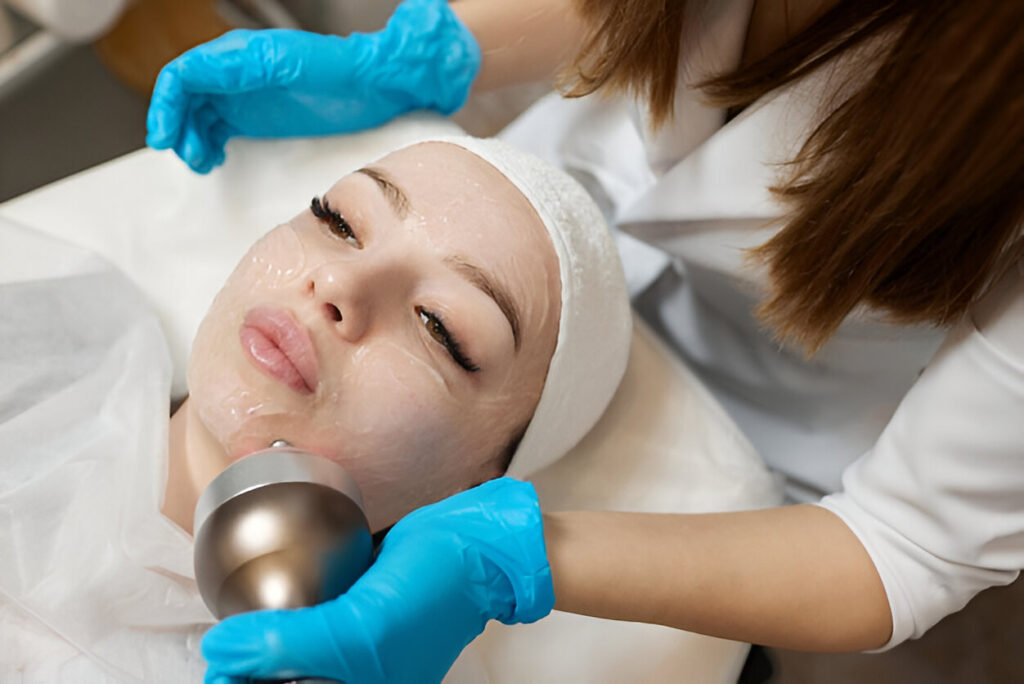
When it comes to rejuvenating your skin, two popular treatments often stand out: laser skin resurrection and chemical peels. Both are designed to reduce pigmentation, fine lines, acne marks and dullness -but they work differently, have different downtime, and suits for different types of skin.
In Dr. Hanan Dermatology Specialty and Trichology Clinic, we provide both these treatments to suit your unique skin needs. This guide will help you understand the difference between laser treatment and chemical peels, and which may be right for your skin goals.
What Is Laser Skin Resurfacing?
The laser skin resurfacing uses the focused beams of light to remove the outer layers of the damaged skin and stimulate collagen production. It is highly effective in addressing deep wrinkles, acne marks and uneven skin tones.
Types of Laser Resurfacing:
- Ablative Lasers (e.g., CO2, Er:YAG): Remove the top layer of skin.
- Non-Ablative Lasers (e.g., Nd:YAG, Fraxel): Heat deeper layers without removing the skin.
Benefits:
- Reduces deep lines and scars
- Tightens loose skin
- Evens out skin tone and texture
- Stimulates collagen and elastin
Ideal For:
- Moderate to severe acne scars
- Deep wrinkles and sun damage
- Uneven texture or tone
Downtime:
- Varies based on laser type
- Typically 5–10 days of redness and peeling for ablative lasers
What Are Chemical Peels?
Chemical peels involve applying an acid-based solution to exfoliate the skin and trigger regeneration. They can use light (superficial) to deep, which depends on the strength and type of use.
Types of Chemical Peels:
- Superficial Peels: Alpha-hydroxy acids (AHAs) or salicylic acid – minimal downtime
- Medium Peels: Trichloroacetic acid (TCA) – 5–7 days recovery
- Deep Peels: Phenol – more intensive treatment and downtime
Benefits:
- Improves skin tone, clarity, and glow
- Reduces mild acne scars and fine lines
- Treats melasma and pigmentation
- Unclogs pores and reduces oiliness
Ideal For:
- Dull or uneven skin
- Pigmentation and sun spots
- Mild to moderate acne or scarring
Downtime:
1–7 days depending on the peel strength
Laser vs Chemical Peel – Key Comparison
Feature | Laser Skin Resurfacing | Chemical Peels |
|---|---|---|
Method | Light-based | Acid-based |
Depth | Deeper penetration | Surface to mid-depth |
Best For | Deep wrinkles, scars | Pigmentation, dullness |
Downtime | 3–10 days | 1–7 days |
Number of Sessions | 1–3 (spaced months apart) | 3–6 (spaced weeks apart) |
Skin Tone Caution | Can cause pigmentation in darker tones if not managed well | Safer for all tones with proper peel selection |
Which Treatment Is Right for You?
Both treatments are highly effective – but selection between them depends on your skin type, anxiety, lifestyle and downtime tolerance.
Choose Laser Resurfacing if you:
- Have deep acne scars or wrinkles
- Want dramatic, longer-lasting results
- Can take 5–10 days off for healing
Choose Chemical Peels if you:
- Want a gentle, gradual improvement
- Have pigmentation or melasma
- Prefer minimal downtime
- Are new to advanced skincare treatments
Safety First: Always Consult a Dermatologist
Whether you choose laser or peel, your results – and protection of the skin – depend on the diagnosis and technique. At Dr. Hanan Dermatology Clinic, We:
- Assess your skin type and concern
- Recommend the ideal treatment (or a combo plan)
- Monitor your progress and aftercare
We also offer combination protocols like Laser + Peel or Peel + PRP for even better results.
Final Thoughts: Glow Your Way
There is no one size-fit-all answer. The best treatment is one that fits your skin type, lifestyle and long -term goals.
For deep changes: laser resurfacing
For subtle clarity and glow: chemical peels
Still not sure? We are here to help.
Visit Dr. Hanan Dermatology Clinic – Chennai’s Expert in Skin Rejuvenation
Book Your Consultation Today!
For Personalised Treatment visit Dr. Hanan Clinic. Feel confident and proud with our expert care.
Table of Contents
Hair Transplant Pain: What Should You Expect?
Hair Transplant Pain: What Should You Expect?
Hair transplant pain is minimal with modern techniques. Learn what to expect during and after the procedure at Dr. Hanan Clinic.
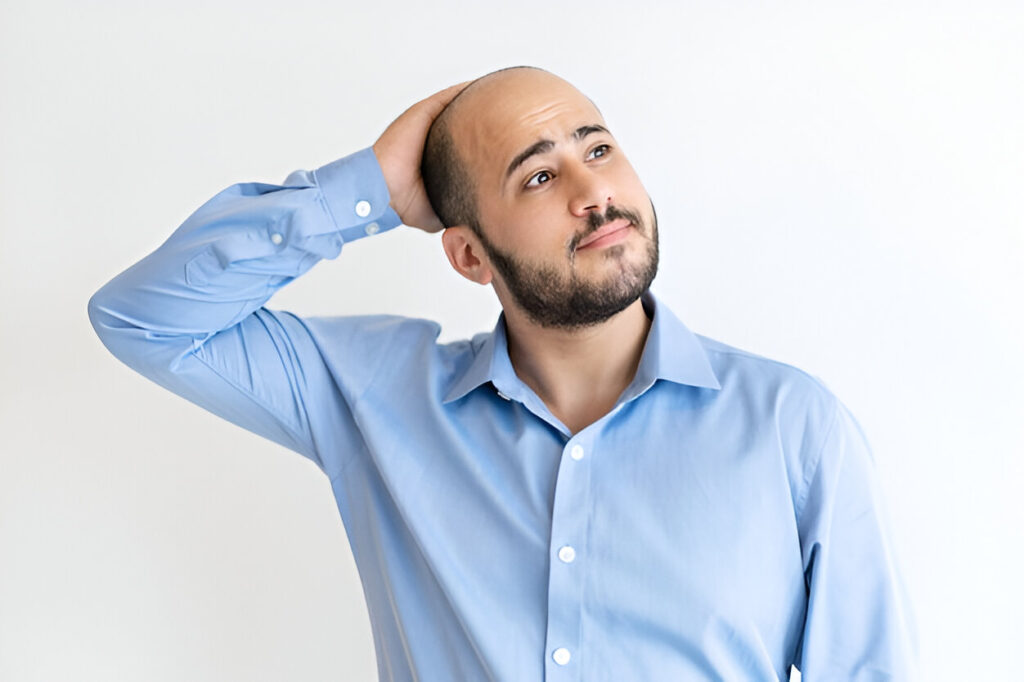
One of the most common worries among people considering hair transplantation is pain. Small incisions and hair follicles can be thought of being extracted or implanted. If you are thinking how painful a hair transplant is really, you are not alone. At Dr. Hanan Dermatology Specialty and Trichology Clinic, we asked this question in almost every consultation. In this blog, we will explain what you can really expect in terms of both hair transplant pain during and later, and why it is more manageable than most people think.
Is a Hair Transplant Painful?
Hair transplant procedures, particularly modern techniques like FUE (Follicular Unit Extraction) and FUT (Follicular Unit Transplantation), are minimally invasive and designed to ensure maximum comfort. Contrary to common fears, hair transplants are not painful, especially when performed by experienced dermatologists using advanced tools and anesthetics.
What Happens During the Procedure?
The process begins with local anesthesia so that both the donor and recipient of the scalp can be numb. Most patients described the injection of the anesthetic as a brief pinch or stinging sensation. Once the anesthesia becomes effective, the scalp becomes completely numb, and you do not feel any pain during the extraction or implantation process. More and more, patients report a mild sensation of pressure or movement, but nothing is sharp or uncomfortable.
During a FUE process, an individual follicle is extracted from the donor area using a small punch tool. Thanks to anesthesia, this process is painless. Similarly, when the graft is transplanted into thin or bald areas, the experience is free from pain. In a FUT procedure, where a strip of skin is removed from the back of the scalp, initial discomfort is still controlled with anesthesia, and the process of stitching is complete without you feeling anything.
How Painful Is the Recovery Period?
After the procedure, anesthesia gradually stops, and you may experience some mild soreness, tightness or feeling of pressure in treated areas. However, this discomfort is usually light and manageable. Most patients describe it as less intense than regular headaches. Over-the-counter or prescribed painkillers are usually sufficient to relieve any post-operative discomfort. At Dr. Hanan Clinic, we provide post-procedure care kits that include pain management medication, soothing spray and instructions that you heal comfortably.
What Does the Healing Process Feel Like?
The healing process is also relatively easy. In the first few days, you can see minor redness, nap, or itching in the transplant area. These symptoms are not painful, but may be a bit annoying. It is important not to scratch or disturb the region as it heals. Within a week to ten days, the most visible signs of the procedure fades, and the discomfort decreases significantly or disappears.
Does Everyone Experience the Same Level of Pain?
An important thing to understand about hair transplant pain is that it varies a bit from person to person. Some people have more pain limit, while others may be more sensitive. However, modern hair transplant techniques are carefully designed to prefer patient comfort. At our Clinic, we also offer additional comfort measures such as numbing sprays, cooling fans and even calming music or entertainment during long sessions.
What Do Patients Say About the Pain?
If you are still worried about the pain, it can help listen to those who have already undergone the process. Most of our patients are surprised by how smooth and comfortable the process is. In fact, many people say that they spend the process of watching movies, browsing their phones or even naps. It is far from the painful operation he had imagined.
Will the Pain Return After a Few Days?
Another common anxiety is the recovery phase. Patients often ask whether the scalp will hurt days or weeks after transplantation. The truth is, if you follow the proper aftercare instructions, the pain quickly fades and doesn’t come back. At Dr. Hanan Clinic, our dermatologists make sure that your scalp remains healthy and taken care of through scheduled follow -ups.
Final Verdict: Is Hair Transplant Pain Worth It?
In summary, if you are putting off a hair transplant because you are afraid of pain, know that today’s procedures are surprisingly gentle.
Thanks to Local anesthesia, advanced technology and specialist care, the pain levels involved are very low – often comparable to minor dental procedures. Brief, mild discomfort is a small price to pay for the long -term benefits of natural, permanent hair restoration.
Therefore, if you are searching online about hair transplant pain, then be sure that reality is far more comfortable than myths. Consult our experts at Dr. Hanan Dermatology Specialty and Trichology Clinic in Chennai to understand your options and experience an almost painless journey for fuller, thicker hair.
Book Your Consultation Today!
For Personalised Treatment visit Dr. Hanan Clinic. Feel confident and proud with our expert care.
Table of Contents
Hair Regrowth Treatments vs Hair Transplant – What Works Best in 2025?
Hair Regrowth Treatments vs Hair Transplant – What Works Best in 2025?
Hair transplant or regrowth treatments? Find out what works best in 2025 with expert tips from Dr. Hanan Clinic, Chennai.
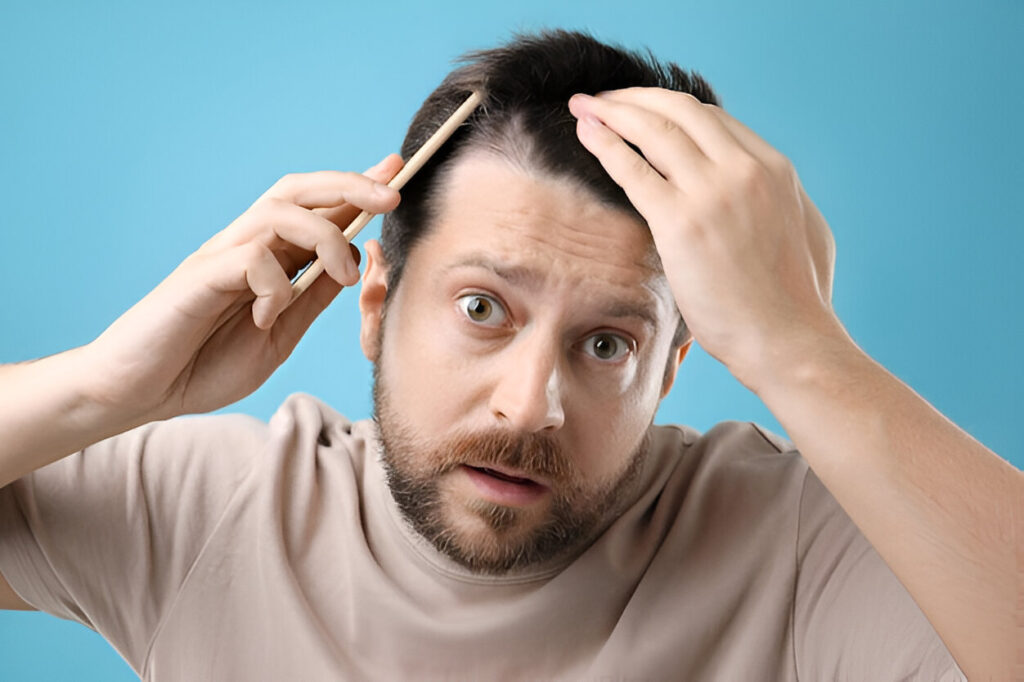
Hair loss is no longer a cosmetic concern-it affects confidence, social life and emotional welfare. With modern progress, 2025 provides several clinically proven options to combat baldness and thin hair. But the question is: Hair Regrowth Treatments vs. Hair Transplant – What does the best work in 2025?
Dr. in Chennai In Hanan Dermatology Specialty and Trichology Clinic, we specialize in both surgical and non-surgical solutions for hair loss. In this blog, we compare two most demanding approaches Non-invasive regrowth treatment and permanent hair transplant surgery-to help you decide which path is right for your skull and your goals.
Understanding the Root of the Problem: Why Hair Loss Happens
Before comparing treatments, it’s important to understand why hair loss occurs:
- Androgenetic Alopecia (pattern baldness)
- Hormonal imbalances (thyroid, PCOS)
- Nutritional deficiencies (iron, biotin, vitamin D)
- Stress & lifestyle factors
- Autoimmune diseases (alopecia areata)
- Medications and treatments (chemotherapy)
Different causes require different treatments—this is why scalp diagnosis is crucial.
What Are Hair Regrowth Treatments?
Hair regrowth treatments are non-surgical methods designed to stimulate dormant hair follicles and slow down further damage. In 2025, these treatments have become more targeted, effective and customized.
1. PRP (Platelet-Rich Plasma) Therapy
PRP is a regenerative treatment that uses components from its own blood to heal and rejuvenate hair follicles. A small amount of your blood is drawn, centrifuged to
Benefits:
- Improves hair density by reactivating dormant follicles
- Minimizes hair shedding and slows hair thinning progression
- Minimal downtime and suitable for most scalp types
Best for:
- Early-stage hair thinning in men and women
- Patients seeking a natural, non-surgical option
- Women with postpartum or hormonal hair loss
Caution:
- Multiple sessions are often required
- Visible results may take 2–3 months
- Should be performed in sterile environments to avoid infections
Microneedling with Exosomes
Microneedling with exosomes combines physical stimulation (microneedling) with the biological power of exosome-cell-retired messengers packed with growth factors and regenerative proteins. The micro injuries created by needles allow exosomes to penetrate and rejuvenate the hair follicle.
Benefits:
- Accelerates hair regrowth faster than PRP
- Improves follicle activity, density, and strand thickness
- Excellent for resistant areas that failed with PRP or medications
Best for:
- Diffuse thinning in both men and women
- Post-transplant scalp stimulation
- Those looking for cutting-edge, regenerative therapy
Caution:
- Requires sterile, controlled application
- Slight redness or sensitivity for 24–48 hours
- Premium cost compared to traditional PRP
Low-Level Laser Therapy (LLLT)
LLLT is a painless, light-based therapy that uses red or close light to stimulate cellular activity in hair follicles. It improves blood circulation and cellular energy, which helps the hair grow thicker and healthy over time.
Benefits:
- Non-invasive and safe for long-term use
- Enhances hair shaft strength and density
- Convenient for home or in-clinic use (helmet or cap-based devices)
Best for:
- Mild to moderate hair thinning
- Post-transplant or post-PRP maintenance
- Individuals with scalp sensitivity to topical treatments
Caution:
- Requires regular use (3–4 times/week)
- Results are gradual over 3–6 months
- Effectiveness varies by device and consistency
Prescription Medications (Minoxidil, Finasteride, Dutasteride)
Prescription medication remains one of the most widely used and medical approved treatments for hair loss in 2025. These drugs work either by increasing the blood circulation to the hair follicles or by reducing the production of dihydrotestosterone (DHT), the hormone that is mainly responsible for Androgenetic alopecia (pattern baldness).
Minoxidil is a topical solution or foam that stimulates hair growth by widening blood vessels and by improving oxygen, nutrients and blood flow. It is effective for both men and women and is available over-the-counter.
Finasteride and dutasteride are oral medications that inhibit the conversion of testosterone to DHT. While Finasteride FDA-approved, Dutasteride is considered more powerful and is often used in India under dermatologist guidance.
Benefits:
- Scientifically proven to reduce hair fall and improve density
- Easy to incorporate into daily routines
- Can be combined with PRP, LLLT, or microneedling for synergistic effects
Best for:
- Men with male pattern hair loss
- Women with hormonal hair thinning (Minoxidil only)
- Patients not ready for surgery or as post-transplant maintenance
Caution:
- Results vary by individual and take 3–6 months of consistent use
- Side effects may include scalp irritation (Minoxidil) or sexual dysfunction (Finasteride/Dutasteride), so ongoing medical supervision is advised
At Dr. Hanan Clinic, we personalize your medication plan based on your scalp type, hair loss pattern, and lifestyle. We also monitor your response with regular follow-ups to ensure safety and effectiveness.
Prescription medications work by targeting the root causes of hair loss—such as DHT sensitivity or poor blood circulation to the follicles. These include both topical and oral medications that are widely used and FDA-approved.
Benefits:
- Affordable and easy to use
- Scientifically proven to slow hair loss and promote regrowth
- Can be combined with PRP or microneedling for better results
Best for:
- Men with male pattern baldness (especially Finasteride and Dutasteride)
- Women with thinning due to hormonal imbalance (Minoxidil)
- Patients not ready for surgical intervention
Note: These medications must be used consistently and under medical supervision to prevent side effects and sustain long-term benefits.
Benefits:
- Affordable
- FDA-approved
Best for:
- Early to moderate pattern baldness
- Those looking for gradual improvement
What Is a Hair Transplant?
Hair transplant is a surgical procedure where hair follicles from a donor area (usually the back of the scalp) are moved to balding areas. It is the most permanent solution available in 2025.
There are two main techniques:
FUE (Follicular Unit Extraction)
Follicles are extracted individually with tiny punches and implanted in recipient zones.
Benefits:
- No linear scar
- Shorter recovery
- Natural-looking results
FUT (Follicular Unit Transplantation)
A strip of scalp is removed and grafts are prepared from it.
Benefits:
- More grafts in one session
- Suitable for larger bald patches
What Is the Best Hair Transplant Technology in 2025?
Great question (and thank you Google’s People Also Ask!).
In 2025, the most advanced techniques include:
- Sapphire FUE: Uses sapphire blades for precision
- Robotic-assisted Hair Transplantation: AI-based graft harvesting
- DHI (Direct Hair Implantation): No channel opening step, more control
At Dr. Hanan Clinic, we combine these advanced tools with dermatologist-level planning for natural hairlines and higher graft survival.
Hair Regrowth Treatments vs Hair Transplant – Key Comparison
Feature | Hair Regrowth Treatments | Hair Transplant |
Type | Non-surgical | Surgical |
Suitability | Early to moderate hair loss | Advanced baldness (Grade 3+) |
Downtime | Minimal to none | 3–7 days recovery |
Cost | Lower per session | One-time higher cost |
Results | Gradual, needs maintenance | Permanent, fuller coverage |
Side Effects | Minimal | Mild swelling, crusting |
Maintenance | Required (every 1–3 months) | PRP or LLLT optional for existing hair |
When to Choose Hair Regrowth Treatments
Choose non-surgical regrowth options if:
- You’re under 35
- Hair loss is recent or mild
- You want a gradual, non-invasive solution
- You are medically unfit for surgery
When to Choose Hair Transplant
Opt for a transplant if:
- You have visible bald patches (Grade 3 and above)
- You want long-lasting, high-density results
- You’ve already tried PRP, meds, or LLLT with limited success
- You have a strong donor area
Our Expert Advice: What We Recommend in 2025
At Dr. Hanan Dermatology Speciality and Trichology Clinic in Chennai, we don’t believe in one-size-fits-all. Our treatment strategy is always:
1. Diagnose First – Using digital scalp mapping and hair density analysis
2. Customize Treatment – PRP, microneedling, medications, transplant – or a combination
3. Track Results – Monthly follow-ups, maintenance planning, lifestyle advice
Our hybrid approach means many patients avoid surgery altogether with the right early intervention.
Why Choose Dr. Hanan Clinic in Chennai?
- 800+ 5-star reviews
- Team of certified dermatologists & trichologists
- Latest in FUE, PRP, Exosome, and Laser technology
- Customized plans for every hair type, age, and stage of hair loss
We are Chennai’s authority in hair restoration, blending medical expertise with the latest innovations.
Conclusion: Which Works Best in 2025?
Hair Regrowth Treatments are ideal if you’re catching the problem early and want to delay or avoid surgery.
Hair Transplant is best for those looking for a permanent fix for visible baldness.
But the ultimate solution? A doctor-designed combination plan customized just for you.
Book Your Consultation Today!
For Personalised Treatment visit Dr. Hanan Clinic. Feel confident and proud with our expert care.
Table of Contents
Top Questions to Ask Before Getting a Hair Transplant in Chennai
Top Questions to Ask Before Getting a Hair Transplant in Chennai
Top Questions to Ask Before Getting a Hair Transplant in Chennai – Learn what to ask your doctor to ensure a safe procedure, natural results, and long-term success.

Hair loss can be emotionally draining, but a hair transplant provides a promising and permanent solution. However, it is important to choose the right clinic and approach – especially in a city like Chennai, where there are more options but not all equal .
Whether you are just starting your research or ready to book a consultation, asking the right question is the key to success. Dr. Hanan Dermatology Specialty and Trichology Clinic helps you highlight the top questions to ask before you get a hair transplant in Chennai – so you invest wisely in your look, confidence and security.
Am I the Right Candidate for a Hair Transplant?
Not every person who experiences hair loss is not a suitable candidate for transplantation. Success depends on hair loss, available donor area and type of underlying health conditions.
Ask Your Doctor:
- What type of hair loss do I have – genetic, autoimmune, hormonal or nutritional?
- Do I have enough donor hair?
- Can my current situation be treated first with medication or PRP?
- Is my hair fall stable or is it still progressing?
Why it matters:Choosing a transplant before understanding your type of hair loss can lead to poor results or wasted money.
Which Technique Will Be Used: FUE or FUT?
Hair transplants are done using two main techniques:
- FUE (Follicular Unit Extraction): Individual follicles are extracted and implanted. Leaves no linear scar.
- FUT (Follicular Unit Transplantation): A strip of skin is removed; typically used when more grafts are needed.
Ask:
- Which method is right for my scalp and hair type?
- How many grafts do I need for natural density?
- Will the scar be visible (if any)?
Why it matters: Each method has pros and cons. Your doctor must tailor the approach to your hair pattern and aesthetic goals.
Who Will Perform the Procedure?
In Chennai, many clinics allow procedures to technicians or unqualified employees, which can compromise your results and safety.
Ask:
- Will a certified dermatologist or trichologist perform the transplant?
- How many years of experience do they have?
- Can I see before-after photos or reviews from previous patients?
Why it matters: You need someone with medical knowledge + aesthetic sense to deliver safe and natural-looking results.
How Much Does a Hair Transplant Cost in Chennai?
Cost is a major concern, but don’t fall for the lowest price tag.
Ask:
- Is the price based on grafts or a flat rate?
- Does the cost include consultation, procedure, anesthesia, medications, and aftercare?
- Are there any hidden fees?
- Is EMI available?
Why it matters: A transparent pricing structure ensures you know exactly what you’re paying for—without surprises.
What Kind of Results Can I Expect?
It’s important to manage your expectations. Some clinics may overpromise density or instant results, which is misleading.
Ask:
- What’s the realistic timeline for hair regrowth?
- Will my hairline look natural?
- How many sessions will I need?
- Can I expect full coverage or partial improvement?
Why it matters: Your hair will grow gradually—usually starting at 3 months, with full results around 9–12 months.
How Safe Is the Procedure?
A hair transplant is generally safe, but only when performed in a sterile, certified environment.
Ask:
- What safety protocols does your clinic follow?
- What are the potential risks or complications?
- Are the tools and instruments single-use and sterilized?
- Do you have an emergency response team?
- ated hair is fragile and prone to color fading.
Why it matters: Complications like infections, scarring, or poor graft survival happen mostly due to poor hygiene or improper technique.
What Is the Recovery Time?
Many patients worry about when they can return to work, travel, or exercise.
Ask:
- When can I resume normal activities?
- What post-care is required?
- When will the scabs fall off?
- Are follow-up visits mandatory?
Why it matters: Understanding the downtime and healing helps you plan your schedule and aftercare correctly.
Will My Transplanted Hair Fall Out?
Yes—but don’t panic! This is a normal part of the hair growth cycle called “shock loss.”
Ask:
- When will the shedding phase happen?
- When will I start seeing permanent growth?
- Will all the transplanted hair grow back?
Why it matters: Many patients worry after seeing hair fall again post-surgery, but informed expectations prevent fear and frustration.
What About My Existing Hair?
A transplant doesn’t prevent further loss of non-transplanted hair. That’s why a combined approach often gives the best results.
Ask:
- Will my natural hair continue thinning?
- Do I need to take Minoxidil or Finasteride after the transplant?
- Is PRP recommended as a follow-up?
Why it matters: Treating the entire scalp—not just the bald spots—ensures long-term results.
How Do I Choose the Right Clinic in Chennai?
Here’s where the decision really counts. Chennai has many clinics offering “discount” transplants. But the right clinic isn’t just about affordability—it’s about credibility, hygiene, and expertise.
Ask:
- Is the clinic certified and dermatology-led?
- What do reviews say? Do they have over 500–800+ Google ratings?
- Are consultations personalized and science-based?
- Do they offer complete support from pre-care to aftercare?
Why it matters: Your choice of clinic affects not just your looks—but your health and safety, too.
Bonus Questions to Consider
If you still have doubts, ask these during your consultation:
- What if I don’t get the results I expected—do you offer a corrective plan?
- Do you document graft survival rates?
- Is there a contact number in case I face post-op issues?
- Will shaving be required for the procedure?
Why Patients in Chennai Choose Dr. Hanan Dermatology Clinic
At Dr. Hanan Dermatology Speciality and Trichology Clinic, Chennai, we answer all these questions—and more—with honesty and clarity
Here’s why we’re among the top-rated hair transplant clinics in Chennai:
- 880+ happy patient reviews
- FUE, PRP, Microneedling & Exosome therapies under one roof
- Transparent pricing & consultation
- Certified dermatologists, not technicians
- Natural-looking hairlines designed to suit your face
- Infection-free procedures in sterile setups
Conclusion
Asking the right questions before your hair transplant in Chennai helps you:
- Understand the procedure
- Set realistic goals
- Choose the right clinic
- Ensure safety and results
So don’t be afraid to ask, compare, and consult more than once. The more informed you are, the more successful your hair restoration journey will be.
Book Your Consultation Today!
For Personalised Treatment visit Dr. Hanan Clinic. Feel confident and proud with our expert care.
Table of Contents
How to Choose the Right Shampoo for Your Hair
How to Choose the Right Shampoo for Your Hair – The Complete Guide
Confused about choosing the right shampoo? Discover how to choose the right shampoo for your hair type, scalp, and concerns with expert guidance from Dr. Hanan Clinic

Finding the perfect shampoo isn’t just about picking the bottle that smells the best or is trending online. Your shampoo can make or break your hair health, and yet most people overlook this essential part of their hair care routine. If you’re wondering How to choose the best shampoo for hair loss, you’re not alone — and you’ve come to the right place.
At Dr. Hanan Dermatology Speciality and Trichology Clinic, we treat hundreds of patients who face hair fall, dullness, dryness, dandruff, or thinning hair — often because they’re using the wrong shampoo. This guide will help you understand exactly how to choose the right shampoo for your hair type, scalp condition, and lifestyle.
Why Choosing the Right Shampoo Matters
Your shampoo is the foundation of your hair care routine. Need a good shampoo:
- Clean your scalp and remove excess oil, sweat and buildup
- Nourish and preserve hair shaft
- Keep your scalp pH balance
- Prevent problems like dandruff, itching, or hair fall
On the other hand, the wrong shampoo can:
- Strip your scalp of natural oils
2. Causal irritation or inflammation
3. Worsen existing condition like dandruff or hair thinning
4. Lead to brittle, dried or lifeless hair
So understanding how to choose right shampoo is a must — whether you’re experiencing specific hair issues or simply want healthier locks.
Know Your Scalp Type Before Your Hair Type
Many people buy shampoo based on hair texture – curly, straight, wavy, etc. But shampoos mainly target your scalp, not your varieties. So the first step in choosing the right shampoo is understanding your scalp type.
Oily Scalp
An oily scalp tends to produce excess sebum, making your hair look greasy soon after washing.
What to choose:
- Clarifying or balancing shampoos
- Lightweight, gel-based formulas
- Shampoos with salicylic acid, tea tree oil, or lemon extracts
Avoid:
- Moisturizing or creamy shampoos
- Shampoos with heavy oils or butters
Pro tip: Avoid washing too frequently — it can trigger more oil production.
Dry Scalp
A dry scalp may feel tight, itchy or flashed. It is often confused with dandruff, but is usually caused by lack of moisture.
What to choose:
- Hydrating and moisturizing shampoos
- Formulas with aloe vera, hyaluronic acid, or coconut oil
- Shampoos designed for sensitive skin
Avoid:
- Clarifying shampoos or products with sulfates
- Fragrance-heavy shampoos
Pro tip: Use lukewarm water instead of hot water to retain natural oils.
Normal Scalp
A normal scalp is neither too oily nor too dry — it’s balanced and healthy.
What to choose:
- Gentle, everyday shampoos
- Formulas with mild surfactants and plant-based ingredients
- pH-balanced shampoos
Avoid:
- Overusing clarifying products — even normal scalps can dry out
Pro tip: Even with a normal scalp, seasonal changes can affect oil production.
Understand Your Hair Texture & Density
Once you find out the type of your scalp, it is time to see your hair shaft – its texture, thickness and density. The type of shampoo you need on the basis of these factors will be different.
Fine Hair
Fine hair strands are thinner and more delicate. They’re prone to breakage and can look limp easily.
What to choose:
- Volumizing shampoos
- Lightweight, protein-infused formulas (keratin, biotin)
- Silicone-free products for bounce
Avoid:
- Heavy moisturizing shampoos
- Oils or butter-based formulations
Pro tip: Use a clarifying shampoo once a week to remove buildup.
Thick or Coarse Hair
Thicker hair strands need more moisture to stay manageable and frizz-free.
What to choose:
- Moisturizing shampoos with oils and emollients
- Creamy, nourishing formulations
- Shampoos containing shea butter, argan oil, or coconut milk
Avoid:
- Clarifying shampoos that dry the strands
Pro tip: Pair your shampoo with a deep conditioner for best results.
Curly Hair
What to choose:
- Sulfate-free, hydrating shampoos
- Curl-defining ingredients like flaxseed oil, aloe vera, or honey
- Products labeled “curly hair-friendly” or “low-poo”
Avoid:
- Sulfates, parabens, and alcohols
- Products that strip natural moisture
- Pro tip: Don’t shampoo daily — try co-washing or alternate-day washes.
Choose Shampoo Based on Hair Concerns
Another key to learning how to choose the right shampoo for your hair is matching it with your specific hair issues.
Hair Fall / Thinning Hair
Hair fall can be caused by genetics, hormones, stress, or product misuse.
What to choose:
- Strengthening shampoos with biotin, keratin, niacinamide
- Formulas with DHT blockers (e.g., saw palmetto, caffeine)
- Mild cleansers that don’t strip the scalp
Avoid:
- Harsh cleansers and sulfates
- two-in-1 products
Pro tip: A proper scalp diagnosis at a trichology clinic is the best first step.
Dandruff or Flaky Scalp
Caused by fungal overgrowth or dryness, dandruff requires targeted treatment.
What to choose:
- Medicated shampoos with ketoconazole, zinc pyrithione, or selenium sulfide
- Anti-inflammatory ingredients like tea tree oil
Avoid:
- Regular shampoos that only remove flakes without treating the root cause
Pro tip: Follow the treatment shampoo with a moisturizing conditioner to avoid drying the lengths.
Color-Treated Hair
Dyed or chemically treated hair is fragile and prone to color fading.
What to choose:
- Color-safe, sulfate-free shampoos
- Formulas with UV filters and keratin
- Moisturizing ingredients like silk protein, argan oil
Avoid:
- Sulfates and clarifying shampoos
- Salt-based thickening agents
Pro tip: Limit shampooing to 2–3 times a week to preserve color vibrancy.
Learn to Read Shampoo Ingredients
Product labels can be confusing. Here’s how to simplify your choice:
Good Ingredients:
- Mild surfactants (Cocamidopropyl Betaine, Decyl Glucoside)
- Aloe vera, glycerin, hyaluronic acid
- Plant oils: jojoba, argan, coconut
- Natural proteins: keratin, wheat protein, silk amino acids
Ingredients to Avoid (especially for sensitive scalp):
- Sodium Lauryl Sulfate (SLS)
- Parabens
- Isopropyl alcohol
- Synthetic fragrance in high concentrations
Pro tip: Look for “dermatologically tested” or “clinically approved” on labels for better scalp safety.
Do a Patch Test
Even if a shampoo looks perfect on paper, your scalp may react to certain ingredients.
- Apply a small amount behind your ear or on your inner forearm
- Wait 24 hours for signs of itching, redness, or burning
- If irritation occurs, discontinue use
Pro tip: This is especially important if you have eczema, psoriasis, or allergies.
When in Doubt, Ask a Trichologist
Choosing a shampoo involves multiple layers — scalp type, hair texture, ingredients, and goals. If you’re overwhelmed or facing hair loss, consult a trichologist for a personalized plan.
At Dr. Hanan Dermatology Speciality and Trichology Clinic, we provide:
- Expert scalp and hair analysis
- Customized shampoo and product recommendations
- Treatments for hair fall, dandruff, and scalp conditions
Conclusion
Now that you know how to choose right shampoo and how to match it to your scalp and hair type, you can say goodbye to bad hair days. The right shampoo:
- Reduces hair fall
- Adds shine and softness
- Improves scalp health
- Boosts your confidence
Don’t fall for viral trends — your hair deserves what’s truly right for it. And if you’re unsure, we’re here to help.
Book Your Consultation Today!
For Personalised Treatment visit Dr. Hanan Clinic. Feel confident and proud with our expert care.
Table of Contents
Top 10 Hair Care Mistakes You Didn’t Know You Were Making
Top 10 Hair Care Mistakes You Didn’t Know You Were Making
Avoid hair damage by fixing everyday mistakes! Discover the top 10 hair care mistakes you didn’t know you were making.
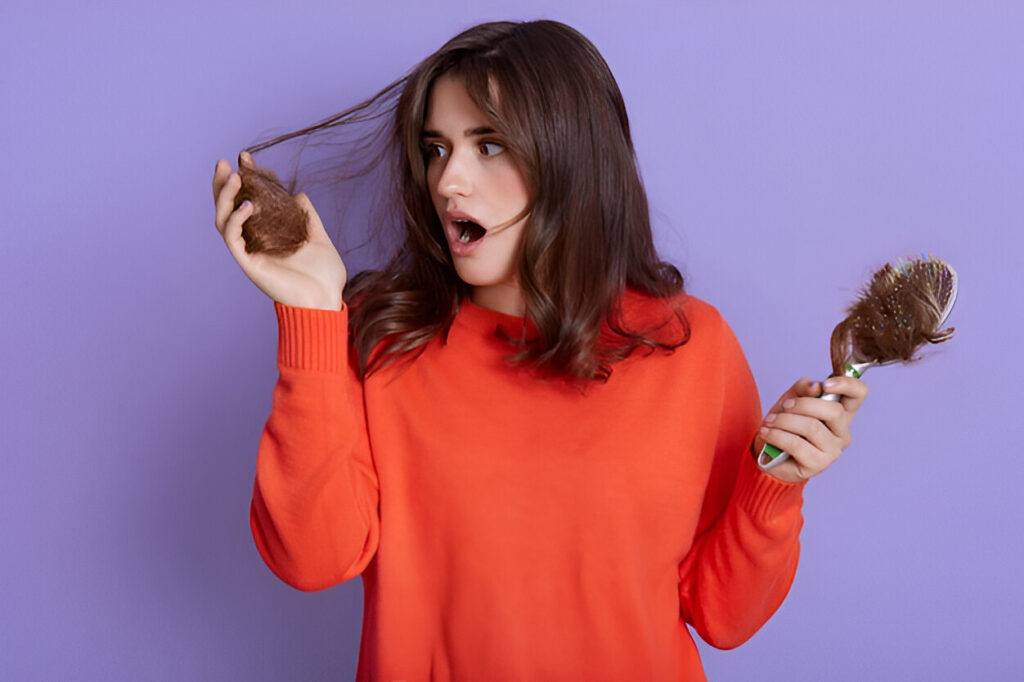
Beautiful, healthy hair does not depend only on genetic or salon visits – it begins with how you treat your hair every day. Dr. Hanan Dermatology Specialty and Trichology Clinic, we regularly treat patients dealing with chronic hair fall, dandruff, thinning and scalp conditions – all are often caused by the same thing: simple but avoidable hair care mistakes.
In this blog, we reveal the top 10 hair care mistakes that you did not know that you were making specialized solutions to help create a better routine and re-achieve your hair health..
Washing Your Hair Too Frequently or Too Rarely
Many people believe that washing your hair daily keeps it clean and healthy. In fact, over washing can snatch your scalp of natural oils, which can cause dryness, breakdown, and even increase in oil production. On the other hand, not washing enough can cause product buildup, irritation and dandruff.
What’s the ideal frequency?
Many people believe that washing your hair daily keeps it clean and healthy. In fact, over washing can snatch your scalp of natural oils, which can cause dryness, breakdown, and even increase in oil production. On the other hand, not washing enough can cause product buildup, irritation and dandruff.
1. Oily scalp: Wash every 2–3 days
2. Dry or curly hair: Wash twice a week
3. Active lifestyle (sweat/dust): Consider rinsing with water or using a mild shampoo
Use sulfate-free, pH-balanced shampoos tailored to your hair type.
Using the Wrong Shampoo for Your Scalp Type
Most people choose shampoos based on fragrance, packaging or trends. But each scalp is different-some are dry, some oily, some dandruff-prone-and each requires a specific type of care.
Shampoo types:
Dry scalp: Look for moisturizing and hydrating shampoos with ingredients like glycerin or aloe vera.
Oily scalp: Choose a clarifying or balancing formula with ingredients like salicylic acid.
Dandruff: Use shampoos with zinc pyrithione, ketoconazole, or coal tar.
Remember: Hair type (straight, curly, thin) matters, but scalp type is what decides your shampoo.
Skipping Conditioner or Applying It to the Scalp
Conditioner helps maintain moisture, reduce frizz and prevent tangling – especially important for damaged or dried hair. But many people are afraid of lubrication or accidentally apply it to the scalp, which can clog pores.
Correct Usage:
1. Apply from mid-length to tips
2. Choose a light conditioner if you have fine hair
3. Use deep conditioners or hair masks weekly if you have chemically treated hair
Avoid applying conditioner to the scalp unless it’s a scalp-specific product.
Rough Towel-Drying or Brushing Wet Hair
Your hair is the most fragile when wet. Rubbing with a regular towel, twisting, or brushing it, brushing it, wetting can cause major breakdown and split ends.
Correct Usage:
1. Blot your hair with a microfiber towel or soft cotton T-shirt
2. Detangle with a wide-tooth comb after applying conditioner
3. Let it air-dry naturally without aggressive rubbing
Avoid brushing entirely when your hair is soaking wet—unless it’s with a wide-tooth comb and conditioner applied.
Excessive Heat Styling Without Protection
The blow dryer, straightener, and curling iron are often used without any heat protection, which damages the hair cuticle, reduces elasticity, and leads to dryness and breakdown
Best Practices:
1. Always apply a heat-protectant spray before using any tool
2. Keep tools on medium heat settings
3. Limit styling to 1–2 times a week
4. Let your hair air-dry naturally whenever possible
A single session of high-heat straightening can cause lasting protein loss in the hair shaft.
Wearing Tight Hairstyles Too Often
Braids, ponytails, or buns that are tightly pulled back can look clean, but they stress your hair follicles, causing traction alopecia, a form of hair loss that can be permanent.
How to fix it:
1. Wear loose hairstyles often
2. Avoid tight elastics or rubber bands
3. Let your scalp rest between tight styles
4. Switch up your parting occasionally
Signs of early damage include scalp tenderness and short, broken hair near your hairline.
Neglecting Your Scalp Health
Your scalp is like a soil where your hair grows – if it is not healthy, your hair will not be either. Nevertheless, most hair routines focus only on strands, ignoring the scalp.
Common scalp issues:
Build-up from products and oils
Fungal infections or dandruff
Clogged hair follicles due to pollution and sweat
Solutions:
1. Exfoliate the scalp using scrubs or salicylic acid shampoos once a week
2. Use a mild clarifying shampoo monthly
3. Treat dandruff or itching early with dermatologist-recommended products
Visit a trichologist if scalp issues persist.
Using DIY Hair Remedies Without Research
DIY masks made from kitchen ingredients such as lemon juice, baking soda, onion juice, or eggs can look natural and harmless. But some of these can disrupt the pH of the scalp, cause irritation, or even damage the hair shaft.
Risky DIY ingredients:
1. Lemon juice: Too acidic; can irritate and dry scalp
2. Baking soda: Abrasive; strips natural oils
3. Egg masks: Can clog pores and cause bad odor if not rinsed properly
Better alternatives:
1. Use dermatologist-approved products
2. Choose masks with biotin, keratin, or niacinamide
3. Consult before trying new DIY solutions, especially if you have sensitive skin
Avoiding Haircuts to Grow Hair Longer
Many people delay trimming their hair so that it grows rapidly. But not cutting the split loops causes them to travel upwards, resulting in frizz, breakage and a thin appearance over time.
Hair health routine:
1. Trim every 6–8 weeks to prevent split ends
2. Use split-end sealing serums in between visits
3. Avoid excessive brushing or pulling
Hair growth starts at the scalp—but maintaining healthy ends is key to visible length.
Overusing Styling Products
Serum, spray, mousse, dry shampoo, hair oils – using many of these can prevent hair follicles, increase residue buildup, and block natural growth.
Simplify your routine:
1. Use only 1–2 leave-in products daily
2. Wash hair regularly if using dry shampoo
3. Avoid alcohol-based sprays that dry out hair
Choose non-comedogenic, lightweight formulations
Bonus Tip: Stress, Diet, and Lifestyle Matter Too
Hair health is influenced by internal health. If you’re following a good hair routine but still facing issues, look at:
1. Nutritional Deficiencies (iron, biotin, zinc)
2. Thyroid Imbalances or PCOS
3. High Stress Levels or poor sleep
Include a balanced diet, adequate hydration, and regular exercise to support hair growth from within.
When Should You See a Dermatologist or Trichologist?
If you’re experiencing:
1. Sudden or excessive hair fall
2. Bald patches or thinning hair
3. Chronic dandruff or itchy scalp
4. No results despite following a good routine
it’s time to consult an expert. Early diagnosis and the right treatment plan can prevent long-term hair loss.
Conclusion:
Hair care does not need to be complicated. Just avoiding these 10 normal hair care mistakes, you can improve your hair quality, strength and glow over time.
Every strand matters – and healthy hair starts with a healthy routine. If you are constantly struggling with hair issues, then we are here to help.
Book Your Consultation Today!
For Personalised Treatment visit Dr. Hanan Clinic. Feel confident and proud with our expert care.
Table of Contents
Top 5 Anti-Aging Treatments That Actually Work in 2025
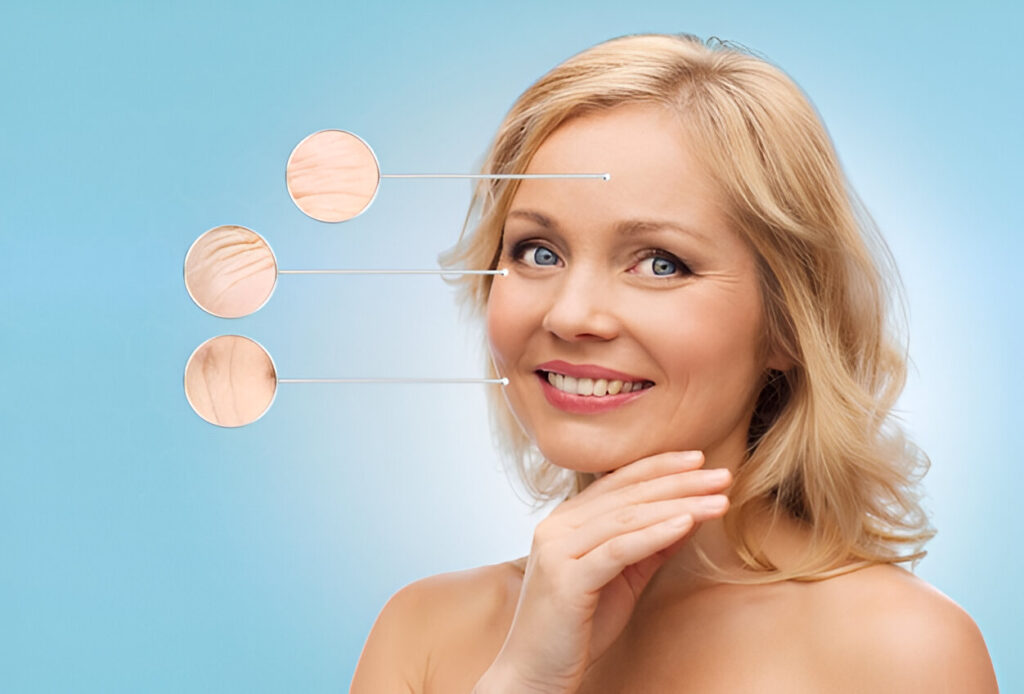
Aging is a natural process, but the desire to look young is timeless. In 2025, progress in dermatology and beauty therapy has brought out more effective and safe anti-aging treatment than ever. If you want to maintain the firm, glow and young looking skin, then the top five anti-aging treatments here are actually working-bounced by experts and science.
Microneedling with Exosomes: The Future of Skin Regeneration
Microneedling with exosomes is one of the most advanced anti-aging innovations of 2025. While traditional microneedling boosts collagen by creating micro-injuries, the addition of exosomes—powerful cell-derived messengers—supercharges your skin’s healing and rejuvenation.|
How It Works:
- Tiny needles create microchannels in the skin
- Exosome-rich serums are applied immediately after
- Exosomes deliver growth factors, peptides, and RNA to regenerate skin from deep within
Benefits:
- Promotes collagen and elastin production
- Improves fine lines, pigmentation, and dullness
- Accelerates cell turnover and skin healing
- More effective than PRP, with faster visible results
Ideal For:
- Ages 25–55
- Those looking for cutting-edge, non-surgical rejuvenation
- Patients who want brighter, tighter, and younger-looking skin
Downtime:
Minimal — 1–2 days of mild redness or sensitivity
Hydrafacial with Anti-Aging Serums
HydraFacial has become one of the most popular anti-aging facials due to its ability to combine deep cleaning, exfoliation and hydration in a session. In 2025, new versions of HydraFacial include powerful anti-aging serums such as peptides, antioxidants, and growth factors.
How It Works:
- Uses a patented Vortex-Fusion technology
- Simultaneously cleanses, exfoliates, extracts, and hydrates
Benefits:
- Reduces wrinkles and fine lines
- Plumps and smoothens the skin
- Deep hydration for a youthful glow
Ideal For:
- All skin types
- Brides-to-be, professionals, and aging adults looking for regular maintenance
Downtime:
Zero downtime. It’s considered a lunchtime procedure.
Laser Resurfacing (Fractional CO2 Laser & Er:YAG)
Laser resurfacing 2025 has a gold standard to tighten the skin and treat age -related pigmentation and texture issues.
How It Works:
- Lasers remove outer layers of the skin in a fractionated pattern
- Promotes new collagen and skin regeneration
Benefits:
- Smoothens wrinkles and acne scars
- Evens skin tone and pigmentation
- Tightens sagging skin
Ideal For:
- Ages 35 and above
- People with sun damage, wrinkles, and early signs of aging
Downtime:
Depends on the laser used—ranges from 3 to 7 days
Botox and Dermal Fillers (Advanced Techniques)
Neurotoxins like Botox and dermal fillers like hyaluronic acid are still among the most effective non-surgical anti-aging treatments. In 2025, advanced techniques ensure a more natural and subtle look.
How It Works:
- Botox relaxes muscles to prevent wrinkles
- Fillers restore volume and hydration to sagging areas
Benefits:
- Prevents and reduces expression lines
- Adds youthful volume to cheeks, lips, and temples
- Immediate visible results
Ideal For:
- People over 30
- Anyone looking for non-invasive facial rejuvenation
Downtime:
Minimal; mild swelling or bruising may last 1–2 days
HIFU Treatment: Lift and Tighten Without Surgery
HIFU (High-Intensity Focused Ultrasound) is a non-invasive treatment that targets deep layers of the skin to stimulate collagen and tighten tissues. It’s a 2025 favorite for patients who want a facelift-like effect—without the pain, cost, or downtime of surgery.
How It Works:
- Focused ultrasound energy is delivered deep into the dermis and SMAS layer
- This triggers natural collagen production
- Gradual tightening and lifting over the next few months
Benefits:
- Non-surgical facial contouring and lifting
- Improves jawline definition, sagging skin, and fine lines
- Long-lasting results that improve over time
Ideal For:
- People aged 30–65
- Early to moderate skin laxity in the face or neck
- Those avoiding surgery but wanting a visible lift
Downtime:
Zero downtime; you can resume activities immediately.
Choosing the Right Treatment: What Dermatologists Recommend
Not all treatments are suitable for everyone. A dermatologist will consider the following factors
1. Age and skin type
2. Skin concerns (wrinkles, sagging, pigmentation)
3. Medical history
4. Lifestyle and budget
Always consult a board-certified dermatologist like those at Dr. Hanan Dermatology Speciality and Trichology and Hair Transplant Center in Chennai for a customized anti-aging plan.
Why Chennai Residents Trust Dr. Hanan’s Clinic for Anti-Aging Care
With over 868+ Google reviews and a 4.9/5 rating, Dr. Hanan’s clinic is one of the most trusted names in Chennai for skin and hair treatments. Our expert team uses FDA-approved equipment, personalized treatments, and modern techniques to help you age gracefully.
Additional Services Include:
- Skin tightening treatments
2. Anti-pigmentation peels
3. Custom facial protocols
4. Hair growth solutions
Why Choose Dr. Hanan Dermatology Speciality and Trichology Clinic?
At Dr. Hanan Dermatology Speciality and Trichology Clinic in Chennai. , we combine medical expertise with personal care. Our hair transplant procedures are:
1. Performed by qualified dermatologist and surgeons
2. Advanced FUE -driven by technology
3. To conform to your unique hairline and facial features
4. Long -term follow -up and supported by support
Whether you are facing the loss of thin or advanced hair at an early stage, we are helping to re-achieve your confidence here-naturally and safely.
Conclusion
2025 brings incredible options for reversing signs of aging. Whether you want to reduce wrinkles, improve skin tone, or simply feel more confident in your skin—modern dermatology offers safe and powerful solutions.
Book Your Consultation Today!
For Personalised Treatment visit Dr. Hanan Clinic. Feel confident and proud with our expert care.
Table of Contents
Hair Transplant Myth and Facts: Dr. Hanan Clinic
Hair Transplant Myth and Facts: Dr. Hanan Clinic
Learn the truth behind hair transplant myth and facts. Get expert insights from Dr. Hanan Clinic to make confident, informed hair choices.
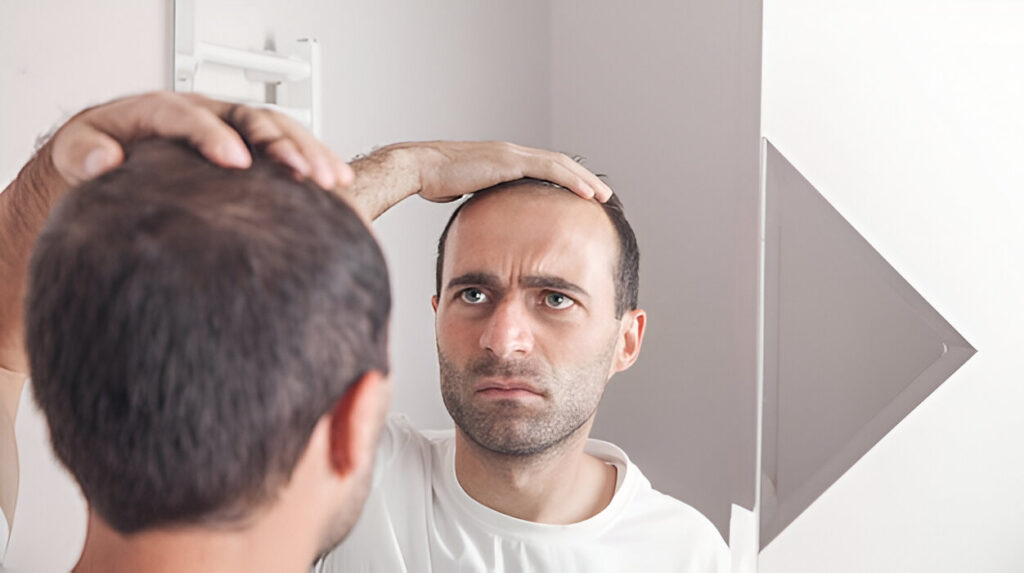
Hair loss can affect confidence, and for many people, a hair transplant becomes the most promising solution. But when it comes to hair transplant procedures, there is a lot of confusion. From social media rumors to old beliefs, many people fall prey to misinformation – and this can prevent them from taking the right decisions.
Dr. Hanan Dermatology Specialty and Trichology Clinic in Chennai, we believe in educating our patients so that they can make informed choices. This blog clears the most common hair transplant myths and facts, which spotlights the truth from fiction once and for all.
Myth 1: Hair Transplant Gives Instant Results
Facts: Hair growth after a transplant is a gradual process.
After a successful hair transplant, most people begin to see the growth of new hair post-procedure after 3-4 months. Full results can take 9–12 months depending on individual factors. Do not expect changes overnight – patience is key.
Myth 2: Hair Transplant Works for Everyone
Fact: Not everyone is a candidate for a hair transplant.
A hair transplantation requires healthy donor hair (usually behind the scalp or from the edges). If you have extensive baldness, poor donor density, or some medical conditions, you may not be eligible. Consultation with a qualified trichologist or dermatologist is necessary
Myth 3: Transplanted Hair Will Eventually Fall Out Again
Fact: Transplanted hair is permanent and typically doesn’t fall out.
The hair used in transplants comes from resistant areas which are genetically resistant to balding. Once transplanted, this hair usually maintains its resistance and grows like normal hair. However, your existing non-transplanted hair may still be thinner over time if not managed.
Myth 4: Hair Transplants Are Painful and Risky
Fact: Modern techniques make it a safe and minimally painful procedure.
Most patients experience minimal discomfort during and after the procedure, with advanced methods such as FUE (Follicular Unit Extraction) and FUT (Follicular Unit Transplantation). Local anesthesia is used, and recovery time is usually short. When performed by experienced professionals, it is extremely safe.
Myth 5: Only Men Can Get Hair Transplants
Fact: Women can also benefit from hair transplant procedures.
While male pattern baldness is more common, women also experience hair thinning, especially with part line or crown. Hair transplants for women are rapidly popular and highly effective when properly done.
Myth 6: Hair Transplants Look Fake
Fact: Modern hair transplants deliver natural-looking results.
Gone are the days of “Pluggy” hairlines. Today’s advanced procedures include accurate placements of individual hair, mimicking the growth pattern of your natural hair. At Dr. Hanan Dermatology Speciality and Trichology clinic, we ensure results that mix basically with your existing hair.
Myth 7: It's Better to Get a Transplant Abroad
Fact: Quality treatment is available right here in India.
Many believe that foreign travel guarantees better results, but it is no longer true. Leading dermatology clinics in India, like us, offer affordable costs with world class technology, experienced surgeons and quality.
Myth 8: You Don't Need Post-Transplant Care
Fact: Aftercare is essential for long-term success.
Even though the transplant is permanent, your scalp requires time to fix, and your new Rome requires proper nutrition. After the post-up care plan, it is important to use prescribed medicines, and to participate in follow-up.
Myth 9: Hair Transplant Leaves a Big Scar
Fact: Scar visibility depends on the technique used.
FUE (follicular unit extraction) leaves marks like small dot like scars that also appear barely with short hair. FUT can leave a linear mark, but it can often be hidden under the hair. In Dr. Hanan Clinic, we help patients choose the right technique depending on their goals and type of hair.
Myth 10: Hair Transplants Are Too Expensive
Fact: It’s a long-term investment and often cost-effective in the long run.
While the upfront cost may seem high, it saves you money compared to the ongoing treatments, serums or years of medications. In addition, it provides a permanent solution to hair loss, Boosting your confidence for life.
Why Choose Dr. Hanan Dermatology Speciality and Trichology Clinic?
At Dr. Hanan Dermatology Speciality and Trichology Clinic in Chennai. , we combine medical expertise with personal care. Our hair transplant procedures are:
- Performed by qualified dermatologist and surgeons
2. Advanced FUE -driven by technology
3. To conform to your unique hairline and facial features
4. Long -term follow -up and supported by support
Whether you are facing the loss of thin or advanced hair at an early stage, we are helping to re-achieve your confidence here-naturally and safely.
Final Thoughts: Don’t Let Myths Hold You Back
Hair loss is a sensitive subject, but should not cause misinformation that you avoid delay or treatment. For hair transplant myths and facts, this guide is to help you make a decision -filled decision.
Book Your Consultation Today!
For Personalised Treatment visit Dr. Hanan Clinic. Feel confident and proud with our expert care.
Table of Contents
How to Choose the Right Shampoo for Your Hair Type
How to Choose the Right Shampoo for Your Hair Type
Confused about shampoo? Learn how to choose the right shampoo for your hair type with expert tips from Dr. Hanan Dermatology Clinic, Chennai.
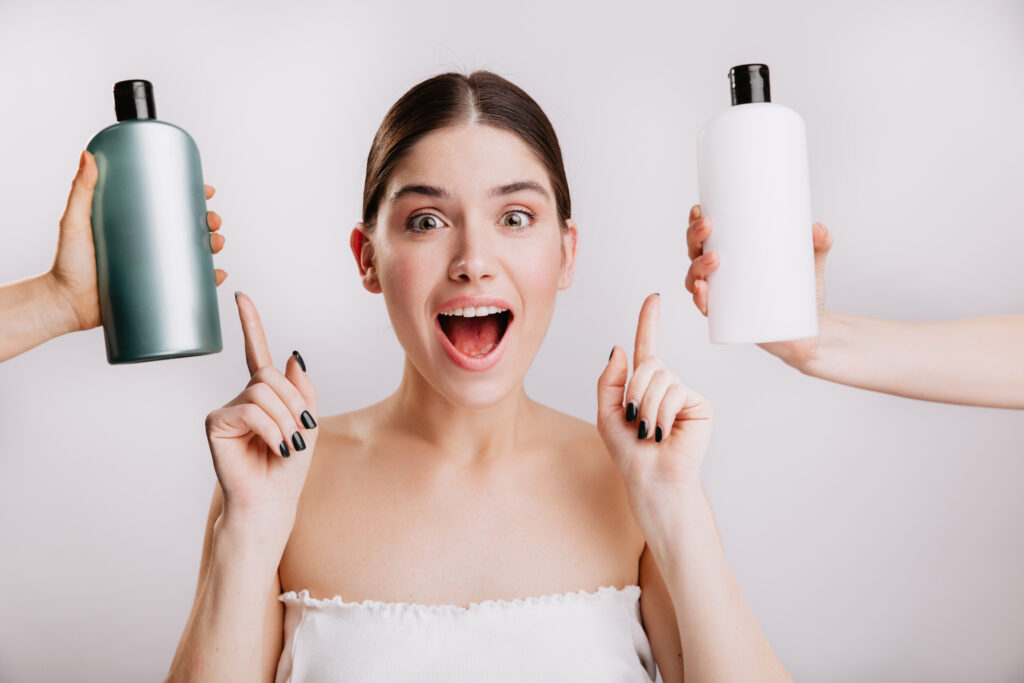
Choosing the right shampoo might seem like a small decision, but it plays a big role in your hair health. With endless options on the shelves—hydrating, clarifying, volumizing, anti-dandruff—it’s easy to feel confused. The truth is, using the wrong shampoo can lead to dryness, hair fall, dandruff, and an irritated scalp.
At Dr. Hanan Dermatology Speciality and Trichology Clinic in Chennai, we guide our patients in making personalized hair care choices, starting with the right shampoo for their unique hair and scalp type. In this blog, let’s decode how to pick the perfect shampoo that actually works for you.
Why Choosing the Right Shampoo Matters
Your shampoo is more than just one cleanser – this is the foundation of your hair care routine. The right one supports the health of your scalp, strengthens your hair roots, and keeps your strands shiny and manageable. Wrong one, however, can spoil your scalp condition and cause issues like:
- Hair thinning
- Increased hair fall
- Greasiness or dryness
- Frizz and dullness
- Flaky scalp or dandruff
Step 1: Understand Your Hair Type
Before shopping for a shampoo, determine your hair type:
1. Oily Hair
Quickly looks smooth or flat. A clear or balancing shampoo is required that removes excess oil without drying the scalp.
2. Dry Hair
Often feel brittle, rough or frizzy. A moisturizing or hydrating shampoo with ingredients such as shea butter, argan oil, or coconut oil.
3. Normal Hair
Not very oily or dry. You can choose a mild, sulfate-free shampoo that maintains the natural balance of your scalp.
4. Combination Hair
Oily on the roots and dry at the ends. Choose a balancing formula or apply shampoo to the scalp only when conditioning the ends.
Step 2: Know Your Scalp Type
A healthy scalp equals healthy hair. Match your shampoo to your scalp needs, not just your hair strands.
- Oily scalp: Go for a shampoo with ingredients such as tea tree oil, salicylic acid, or charcoal to control sebum.
- Dry scalp: Soothing ingredients like aloe vera, glycerin and ceramides
Sensitive or itchy scalp: Use fragrance-free, dermatologist-tested shampoos that are soft and hypoallergenic.
Step 3: Identify Hair Concerns
Choose a shampoo that targets your specific hair concern:
Hair Concern | Ideal Shampoo Type |
Hair fall | Strengthening or anti-hair fall shampoo with keratin or biotin |
Dandruff | Anti-dandruff shampoo with zinc pyrithione, ketoconazole, or salicylic acid |
Frizz | Smoothing shampoo with argan oil or keratin |
Color-treated hair | Color-protect shampoo that’s sulfate-free |
Heat-damaged hair | Repairing shampoo with protein and amino acids |
Step 4: Avoid Harmful Ingredients
When choosing a shampoo, always read the label. Avoid these ingredients that can damage your hair over time:
- Sulfates (SLS, SLES) – Can strip natural oils and irritate the scalp
- Parabens – Preservatives linked to hormone disruption
- Alcohol – Can be drying (except for fatty alcohols like cetyl or stearyl)
Artificial fragrance or color – May trigger sensitivity or allergies
Step 5: Try Before You Commit
If you’re unsure whether a shampoo will suit your hair:
- Start with a small bottle or travel size
- Use it for at least 2–3 washes
- Watch how your scalp and strands respond
If irritation, hair fall, or excess dryness occurs, discontinue use and consult a dermatologist.
Expert Advice from Dr. Hanan Dermatology Clinic
Every scalp and hair type are different. This is why Dr. Hanan Dermatology Specialty and Trichology Clinic in Chennai, we provide individual hair care guidance after a detailed scalp analysis. Whether you are struggling with hair loss, dandruff, or dryness, our team will help you take the right shampoo and treatment to restore hair health.
Quick Tips to Get the Best Out of Your Shampoo
Shampoo your scalp, not only hair length
Rinse well to avoid buildup
Use lukewarm or cold water, not hot
Follow with conditioner suitable for your hair type
Do not over wash – For most people the ideal wash is 2-3 times.
Conclusion
Your shampoo can either protect your hair or be the silent criminal behind damage. Choosing the right shampoo for your hair type makes your hair healthy, vibrant and strong. If you are uncertain from where to start, then book a consultation with our hair experts at Dr. Hanan Dermatology and Trichology Clinic – we are here to guide you at every step.
Book Your Consultation Today!
For Personalised Treatment visit Dr. Hanan Clinic. Feel confident and proud with our expert care.
Table of Contents
Hair Fall Treatment for Women: Causes, Remedies & Solutions
Hair Fall Treatment for Women: Causes, Remedies & Advanced Solutions
Looking for the best hair fall treatment for women? Discover expert solutions, causes, and remedies from Dr. Hanan Dermatology Clinic.
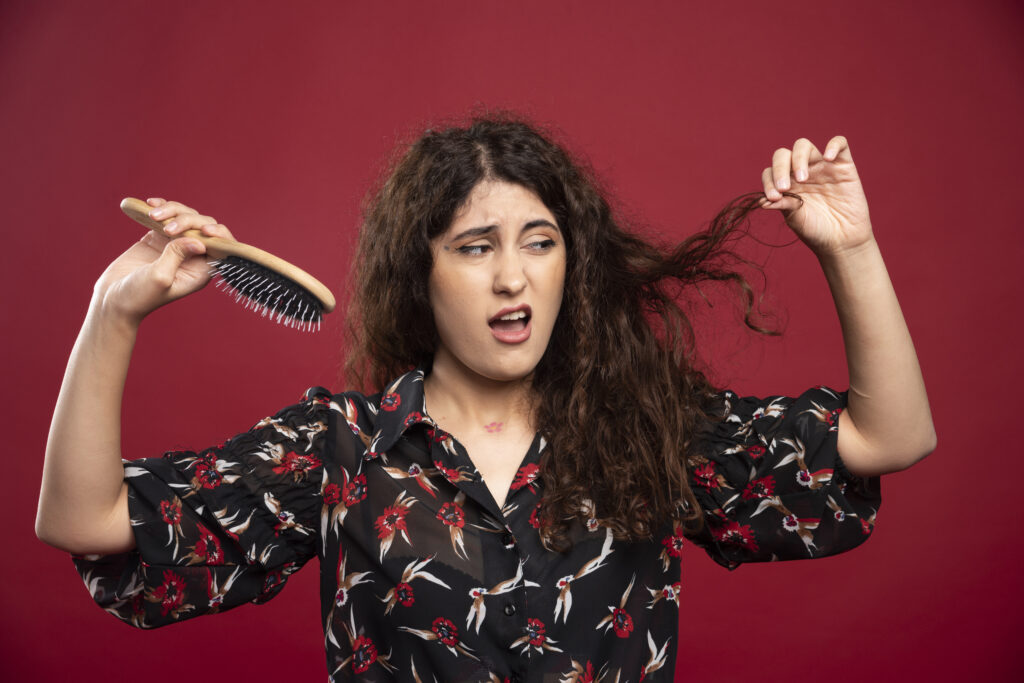
Hair is an essential part of a woman’s identity and confidence. But when the hair falls, it can cause anxiety, low self -esteem and emotional distress. Dr. Hanan Dermatology Specialty and Trichology Clinic, we understand the emotional and physical effects of female hair loss – and we are here to help you find a real solution.
In this comprehensive guide, you will learn the causes of hair fall in women, how to identify early signals, and the most effective hair fall for women – from home remedies to clinical intervention.
What Is Hair Fall in Women?
Hair collapse, or hair loss in women is medically known as female pattern hair loss (FPHL) or Androgenic Alopecia. This male pattern differs from baldness and often presents as a normal thin on the crown rather than a recurrent hairline.
Most women shed between 50–100 strands per day, which is normal. However, when hair shedding exceeds this rate or you notice to be visible, it is time to take action.
Common Causes of Hair Fall in Women
Understanding the root cause of hair loss is crucial for effective treatment. Here are some of the most common culprits:
1. Hormonal Imbalances
- Thyroid disorders
- Polycystic ovary syndrome (PCOS)
- Menopause or postpartum hormone shifts
Hormones regulate hair growth cycles, and imbalances can lead to shedding or thinning.
2. Stress & Lifestyle
High stress levels can trigger telogen effluvium due to work pressure, anxiety or trauma, a condition where hair enters the resting phase and falls out.
3. Nutritional Deficiencies
- Iron, Vitamin D, Zinc, and Biotin deficiencies are often linked to hair loss.
2. Poor diet or extreme weight loss can rapidly deplete nutrients essential for hair growth.
4. Medical Conditions
- Alopecia Areata – An autoimmune condition causing patchy bald spots.
Scalp Infections – Fungal infections like ringworm can lead to localized hair loss.
5. Genetics
If your mother or grandmother experienced hair thinning, you may be genetically predisposed to female pattern hair loss.
Early Signs of Hair Loss in Women
Recognizing the early signs helps prevent further damage:
- Thinning on the top or crown of the scalp
2. Widening of the hair part
3. More hair in your comb or shower drain
4. A ponytail that feels thinner than usual
5. Bald spots or patches
Best Hair Fall Treatments for Women
At Dr. Hanan Dermatology Clinic, we offer customized treatment plans based on your hair type, scalp condition, and lifestyle. Here are the best hair fall treatments we recommend:
1. Topical Medications
Minoxidil 2% or 5%: FDA-approved treatment for women. Encourages hair growth by widening blood vessels and extending the growth phase.
2. Oral Medications
- Spironolactone: Blocks androgens, suitable for women with PCOS-related hair loss.
2. Iron or Vitamin D supplements: Corrects deficiencies that contribute to shedding.
3. Platelet-Rich Plasma (PRP) Therapy
PRP uses your own blood platelets to stimulate dormant hair follicles. It’s a non-surgical, advanced method that promotes natural hair growth.
4. Low-Level Laser Therapy (LLLT)
Laser caps and in-clinic laser treatments improve scalp circulation and hair density.
5. Mesotherapy
A non-invasive treatment involving micro-injections of vitamins, enzymes, and plant extracts directly into the scalp to stimulate follicles and strengthen hair.
Natural Remedies and Home Care Tips
While clinical treatment is effective, integrating home remedies into your routine can complement professional care:
- Use a wide-tooth comb to prevent breakage.
- Avoid tight hairstyles like ponytails and buns.
- Oil massages with castor or coconut oil to improve blood circulation.
- Aloe vera gel application helps soothe the scalp and reduce dandruff.
Scalp exfoliation once a week to remove dead skin and stimulate follicles.
Lifestyle Changes for Long-Term Hair Health
- Balanced diet rich in protein, iron, omega-3 fatty acids, and vitamins.
- Hydration: Drink at least 2–3 liters of water daily.
- Sleep: Get 7–8 hours of uninterrupted sleep to support hormonal balance.
Limit heat styling and chemical treatments that weaken the hair shaft.
Why Choose Dr. Hanan Dermatology Speciality and Trichology Clinic?
Located in Padur, Chennai, our clinic is known for:
Experienced Dermatologists & Trichologists
Advanced Technology (PRP, Mesotherapy, LLLT)
Personalized Hair Restoration Plans
High Success Rate & Client Satisfaction
Whether you’re experiencing seasonal shedding or long-term hair thinning, our specialists will work with you to diagnose the cause and craft a treatment plan that delivers visible results
Book Your Consultation Today
Don’t let hair loss affect your confidence. Get professional care from the leading hair fall treatment clinic in Chennai. Contact us today to schedule a scalp analysis and consultation.
Book Your Consultation Today!
For Personalised Treatment visit Dr. Hanan Clinic. Feel confident and proud with our expert care.

